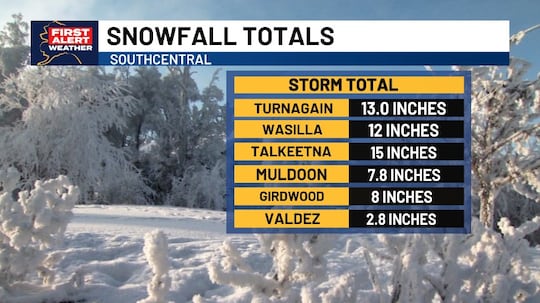Alaska
Alaska Supreme Court weighs whether correspondence education lawsuit wrongly targeted state • Alaska Beacon
Alaska Supreme Court justices on Thursday weighed whether a lawsuit seeking to have the large portions of the state’s correspondence school program found unconstitutional wrongly focused on the state government.
The justices heard arguments in the appeal of a Superior Court ruling that found a correspondence school program law to be unconstitutional.
A central question from the justices during oral arguments was whether plaintiffs should be suing the state’s education department or individual districts.
The case whose decision is under appeal is State of Alaska, Department of Education and Early Development v. Alexander, in which plaintiffs argued that it is unconstitutional for public education money to be spent on private school tuition. Superior Court Judge Adolf Zeman found the spending unconstitutional and struck down the parts of statute that allow homeschool allotment money; he suggested lawmakers could rewrite the law to make it constitutional.
The state constitution does not allow the use of public funds for the benefit of private or religious schools.
Attorneys for the state of Alaska, a group of parents whose children attend private school using allotment money and another set of parents who argue that spending is unconstitutional all made oral arguments. Justices interrupted all three of the attorneys’ arguments with pointed questions about how the case should be decided.
Attorneys for the state appealed Zeman’s ruling and said the case should not hold the state’s education department to account because individual school districts are the only oversight body for homeschool spending.
In May, Gov. Mike Dunleavy and Deputy Attorney General Cori Mills argued the lower court’s ruling should be thrown out because it is too broad, but Elbert Lin, a Virginia lawyer hired by the state, argued that since the Alaska statute that governs homeschool allotment spending has many constitutional applications, such as spending for school supplies as retailers like Target, it should not be thrown out — even if there is also the opportunity for the statute to be applied unconstitutionally.
“It is irrelevant whether the provision might be applied unconstitutionally in the view of the plaintiffs or even this court,” he said. Lin argued that if there is an unconstitutional use of the funds, the plaintiffs should sue individual districts, not the state. That way the courts can enforce any unconstitutional spending with a “scalpel rather than a sledgehammer.”
The state’s education department was once responsible for monitoring homeschool allotment spending, but a 2014 law proposed by Dunleavy, then a state senator, put that responsibility on districts instead.
Justice Dario Borghesan probed Lin’s argument and asked if state law allows allotments to be spent on full-time private school tuition. He said “both text and legislative history” suggest that full-time enrollment in private school is not correspondence study, which requires a certified teacher to come up with a learning plan for the student. “That seems somewhat nullified, or maybe a rubber stamp, if the child is just attending private school full time,” he said.
Anchorage parents who use homeschool allotments to pay for private school educations joined the case as intervenors, as people who could be affected by its outcome. Their attorney, Kirby Thomas West, took a different tack than the attorney for the state, and argued that the court should make a decision to reverse the lower court’s ruling. She argued that it would violate the United States Constitution to tell parents how they can spend their money.
Borghesan pushed back on that assessment because allotments are public school money. He cited previous case law: “While parents may have a fundamental right to decide whether to send their child to public school, they do not have a fundamental right, generally, to direct how a public school teaches their child,” he read. Essentially, he said, states have authority over how public education money is spent, so the state can stipulate that it may not be spent on a private education.
West sought to make her point through a different comparison: “It would be absurd and patently unconstitutional to suggest that the state must police the use of Permanent Fund dividends to ensure that no Alaskan ever uses that money to defray the cost of their child’s tuition at a private school,” she said. “It’s just as unconstitutional to do so here.”
She asked the justices to place a stay, which is a pause on the implementation of a ruling, on the lower court’s decision if they sent the case back to the lower court for reconsideration. The stay would mean her clients could continue to spend public education money on private school tuition.
After the arguments, Chief Deputy Attorney General Margaret Paton-Walsh said she thought the case went well for the defense. “It’s always hard to read the tea leaves, but I think some of the justices certainly seem to be pretty skeptical of that superior court decision,” she said.
She pointed out that it is not typical for the intervenors to make a distinct argument from the defense: “So I think that creates an extra wrinkle for the justices to try to noodle through as they think about the case,” she said.
The plaintiffs’ attorney, Scott Kendall, asked the court to uphold Zeman’s ruling. He argued that the judge was right to strike down homeschool allotments because the intent of the statute is to allow unconstitutional spending.
He pointed to legislative history in his appeal: when Dunleavy proposed the allotment law, he also sought a change to the state constitution to allow public funds to be spent at private schools. Dunleavy also proposed enacting school vouchers, which like the amendment, did not pass.
Kendall said that for that reason the plaintiffs should not have to sue individual school districts, because the statute is meant to allow unconstitutional spending: “When a statute grants a plainly unconstitutional power, as it does in this case — and in fact, the legislative history meticulously explains that that was the very sole reason why this legislation was passed — then it’s clearly unconstitutional on its face,” he said.
Borghesan pushed back on this argument. He repeatedly asked Kendall why the whole statute should be thrown out, rather than targeting unconstitutional uses by suing districts. “Why does that bad purpose, you know, defeat the whole rest of the statute? I mean, we have separation of powers. We’re respectful of the Legislature’s actions,” he said. “We kind of have a duty to uphold constitutional applications of statutes.”
Kendall conceded there may be a way to keep the statute without allowing public education dollars to pay for private school tuition: “There is a possibility this court, with ingenuity, could do a limiting construction — could sever parts of this — and that would be an outcome we would support,” he said.
He then referred to an early court case, in which the Supreme Court invalidated state scholarships for Sheldon Jackson College, a Sitka institution that later closed.
“Because the real core concern here, again, is the core concern when you go back to the Sheldon Jackson case, which is, are we using public funds to subsidize a private educational purpose?” Kendall said. “Here it is clear. It’s clear from the purpose of the statute, it’s clear from the interveners’ very presence here, it’s clear this is happening, and it’s clear this was the purpose of the statute.”
Deena Bishop, the commissioner of Alaska’s Department of Education and Early Development, was in the courtroom. She said after the hearing that, in her view, districts are doing a good job of ensuring state money is spent constitutionally. She did not directly say whether the state education department is in a position to regulate spending. Foremost, she said, her interest is correspondence students: “My purpose and goals are to have a great education every day for young people, and there are nearly 23,000 — it’s 22,900 students — that we want to ensure that their education continues without disruption.”
Chief Justice Peter Maassen said the court would consider the appeal and issue “something” but did not give a time frame for a decision: “No timelines are guaranteed, but we understand the urgency of the matter,” he said. Without a new court ruling, Zeman’s ruling would go into effect on Monday.
Editor-in-Chief Andrew Kitchenman contributed reporting to this story.
GET THE MORNING HEADLINES DELIVERED TO YOUR INBOX

Alaska
Dozens of vehicle accidents reported, Anchorage after-school activities canceled, as snowfall buries Southcentral Alaska

ANCHORAGE, Alaska (KTUU) – Up to a foot of snow has fallen in areas across Southcentral as of Tuesday, with more expected into Wednesday morning.
All sports and after-school activities — except high school basketball and hockey activities — were canceled Tuesday for the Anchorage School District. The decision was made to allow crews to clear school parking lots and manage traffic for snow removal, district officials said.
“These efforts are critical to ensuring schools can safely remain open [Wednesday],” ASD said in a statement.
The Anchorage Police Department’s accident count for the past two days shows there have been 55 car accidents since Monday, as of 9:45 a.m. Tuesday. In addition, there have been 86 vehicles in distress reported by the department.
The snowfall — which has brought up to 13 inches along areas of Turnagain Arm and 12 inches in Wasilla — is expected to continue Tuesday, according to latest forecast models. Numerous winter weather alerts are in effect, and inland areas of Southcentral could see winds up to 25 mph, with coastal areas potentially seeing winds over 45 mph.
Some areas of Southcentral could see more than 20 inches of snowfall by Wednesday, with the Anchorage and Eagle River Hillsides, as well as the foothills of the Talkeetna Mountain, among the areas seeing the most snowfall.
See a spelling or grammar error? Report it to web@ktuu.com
Copyright 2026 KTUU. All rights reserved.
Alaska
Yundt Served: Formal Charges Submitted to Alaska Republican Party, Asks for Party Sanction and Censure of Senator Rob Yundt

On January 3, 2026, Districts 27 and 28 of the Alaska Republican Party received formal charges against Senator Rob Yundt pursuant to Article VII of the Alaska Republican Party Rules.
According to the Alaska Republican Party Rules: “Any candidate or elected official may be sanctioned or censured for any of the following
reasons:
(a) Failure to follow the Party Platform.
(b) Engagement in any activities prohibited by or contrary to these rules or RNC Rules.
(c) Failure to carry out or perform the duties of their office.
(d) Engaging in prohibited discrimination.
(e) Forming a majority caucus in which non-Republicans are at least 1/3 or more of the
coalition.
(f) Engaging in other activities that may be reasonably assessed as bringing dishonor to
the ARP, such as commission of a serious crime.”
Party Rules require the signatures of at least 3 registered Republican constituents for official charges to be filed. The formal charges were signed by registered Republican voters and District N constitutions Jerad McClure, Thomas W. Oels, Janice M. Norman, and Manda Gershon.
Yundt is charged with “failure to adhere and uphold the Alaska Republican Party Platform” and “engaging in conduct contrary to the principles and priorities of the Alaska Republican Party Rules.” The constituents request: “Senator Rob Yundt be provided proper notice of the charges and a full and fair opportunity to respond; and that, upon a finding by the required two-thirds (2/3) vote of the District Committees that the charges are valid, the Committees impose the maximum sanctions authorized under Article VII.”
If the Party finds Yundt guilty of the charges, Yundt may be disciplined with formal censure by the Alaska Republican Party, declaration of ineligibility for Party endorsement, withdrawal of political support, prohibition from participating in certain Party activities, and official and public declaration that Yundt’s conduct and voting record contradict the Party’s values and priorities.
Reasons for the charges are based on Yundt’s active support of House Bill 57, Senate Bill 113, and Senate Bill 92. Constituents who filed the charges argue that HB 57 opposes the Alaska Republican Party Platform by “expanding government surveillance and dramatically increasing education spending;” that SB 113 opposes the Party’s Platform by “impos[ing] new tax burdens on Alaskan consumers and small businesses;” and that SB 92 opposes the Party by “proposing a targeted 9.2% tax on major private-sector energy producer supplying natural gas to Southcentral Alaska.” Although the filed charges state that SB 92 proposes a 9.2% tax, the bill actually proposes a 9.4% tax on income from oil and gas production and transportation.
Many Alaskan conservatives have expressed frustration with Senator Yundt’s legislative decisions. Some, like Marcy Sowers, consider Yundt more like “a tax-loving social justice warrior” than a conservative.
Related
Alaska
Pilot of Alaska flight that lost door plug over Portland sues Boeing, claims company blamed him

The Alaska Airlines captain who piloted the Boeing 737 Max that lost a door plug over Portland two years ago is suing the plane’s manufacturer, alleging that the company has tried to shift blame to him to shield its own negligence.
The $10 million suit — filed in Multnomah County Circuit Court on Tuesday on behalf of captain Brandon Fisher — stems from the dramatic Jan. 5, 2024 mid-air depressurization of Flight 1282, when a door plug in the 26th row flew off six minutes after take off, creating a 2-by-4-foot hole in the plane that forced Fisher and co-pilot Emily Wiprud to perform an emergency landing back at PDX.
None of the 171 passengers or six crew members on board was seriously injured, but some aviation medical experts said that the consequences could have been “catastrophic” had the incident happened at a higher altitude.
Fisher’s lawsuit is the latest in a series filed against Boeing, including dozens from Flight 1282 passengers. It also names Spirit AeroSystems, a subcontractor that worked on the plane.
The lawsuit blames the incident on quality control issues with the door plug. It argues that Boeing caught five misinstalled rivets in the panel, and that Spirit employees painted over the rivets instead of reinstalling them correctly. Boeing inspectors caught the discrepancy again, the complaint alleges, but when employees finally reopened the panel to fix the rivets, they didn’t reattach four bolts that secured the door panel.
The complaint’s allegations that Boeing employees failed to secure the bolts is in line with a National Transportation Safety Board investigation that came to the conclusion that the bolts hadn’t been replaced.
Despite these internal issues, Fisher claims Boeing deliberately shifted blame towards him and his first officer.
Lawyers for Boeing in an earlier lawsuit wrote that the company wasn’t responsible for the incident because the plane had been “improperly maintained or misused by persons and/or entities other than Boeing.”
Fisher’s complaint alleges that the company’s statement was intended to “paint him as the scapegoat for Boeing’s numerous failures.”
“Instead of praising Captain Fisher’s bravery, Boeing inexplicably impugned the reputations of the pilots,” the lawsuit says.
As a result, Fisher has been scrutinized for his role in the incident, the lawsuit alleges, and named in two lawsuits by passengers.
Spokespeople for Boeing and Spirit AeroSystems declined to comment on the lawsuit.
-

 World1 week ago
World1 week agoHamas builds new terror regime in Gaza, recruiting teens amid problematic election
-

 News1 week ago
News1 week agoFor those who help the poor, 2025 goes down as a year of chaos
-

 Business1 week ago
Business1 week agoInstacart ends AI pricing test that charged shoppers different prices for the same items
-

 Health1 week ago
Health1 week agoDid holiday stress wreak havoc on your gut? Doctors say 6 simple tips can help
-

 Technology1 week ago
Technology1 week agoChatGPT’s GPT-5.2 is here, and it feels rushed
-

 Business1 week ago
Business1 week agoA tale of two Ralphs — Lauren and the supermarket — shows the reality of a K-shaped economy
-

 Science1 week ago
Science1 week agoWe Asked for Environmental Fixes in Your State. You Sent In Thousands.
-

 Politics1 week ago
Politics1 week agoThe biggest losers of 2025: Who fell flat as the year closed
























